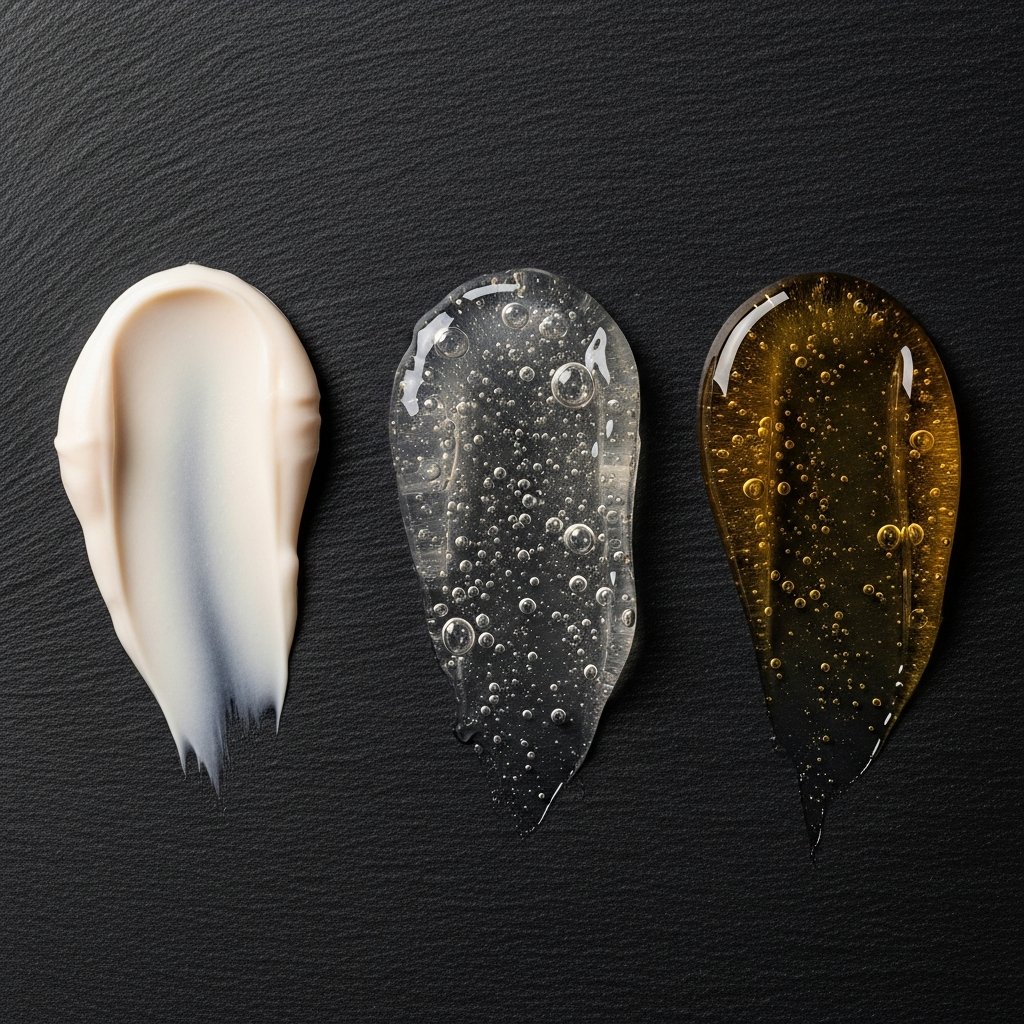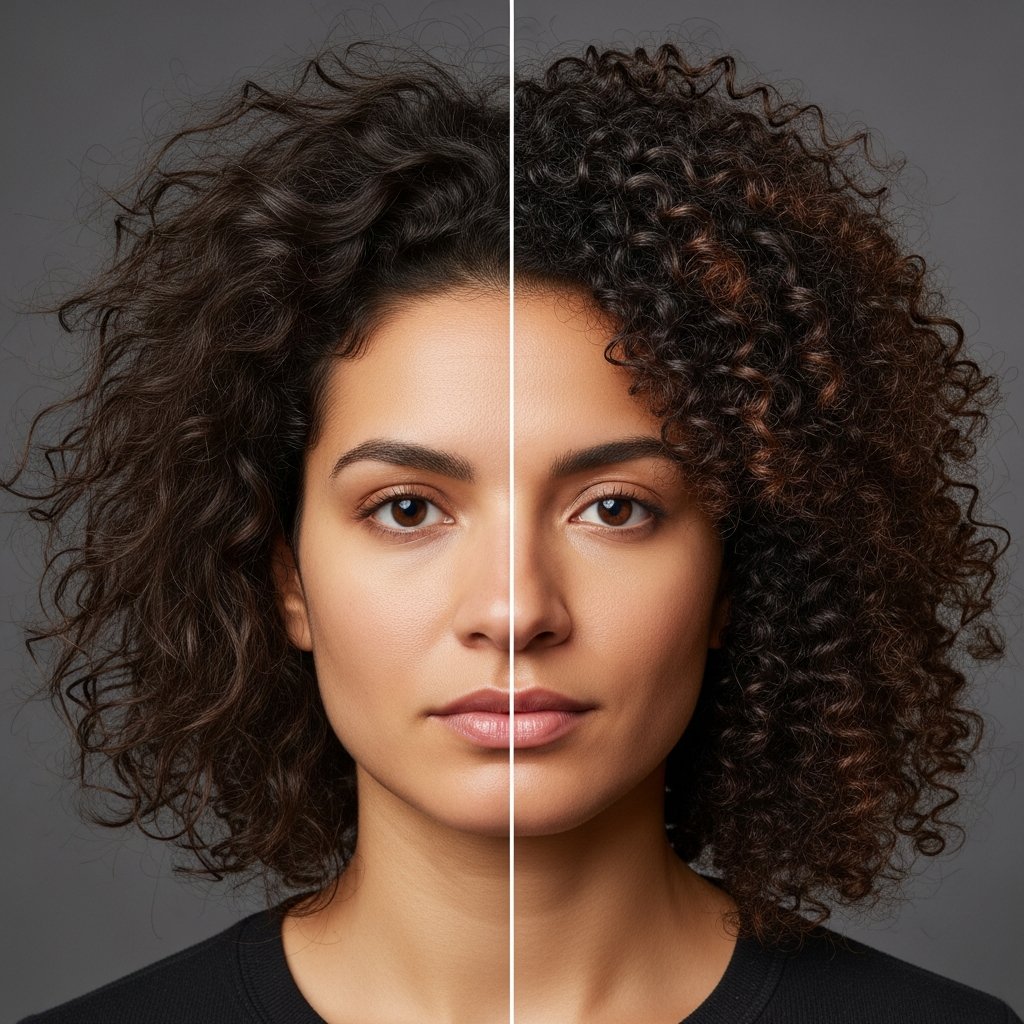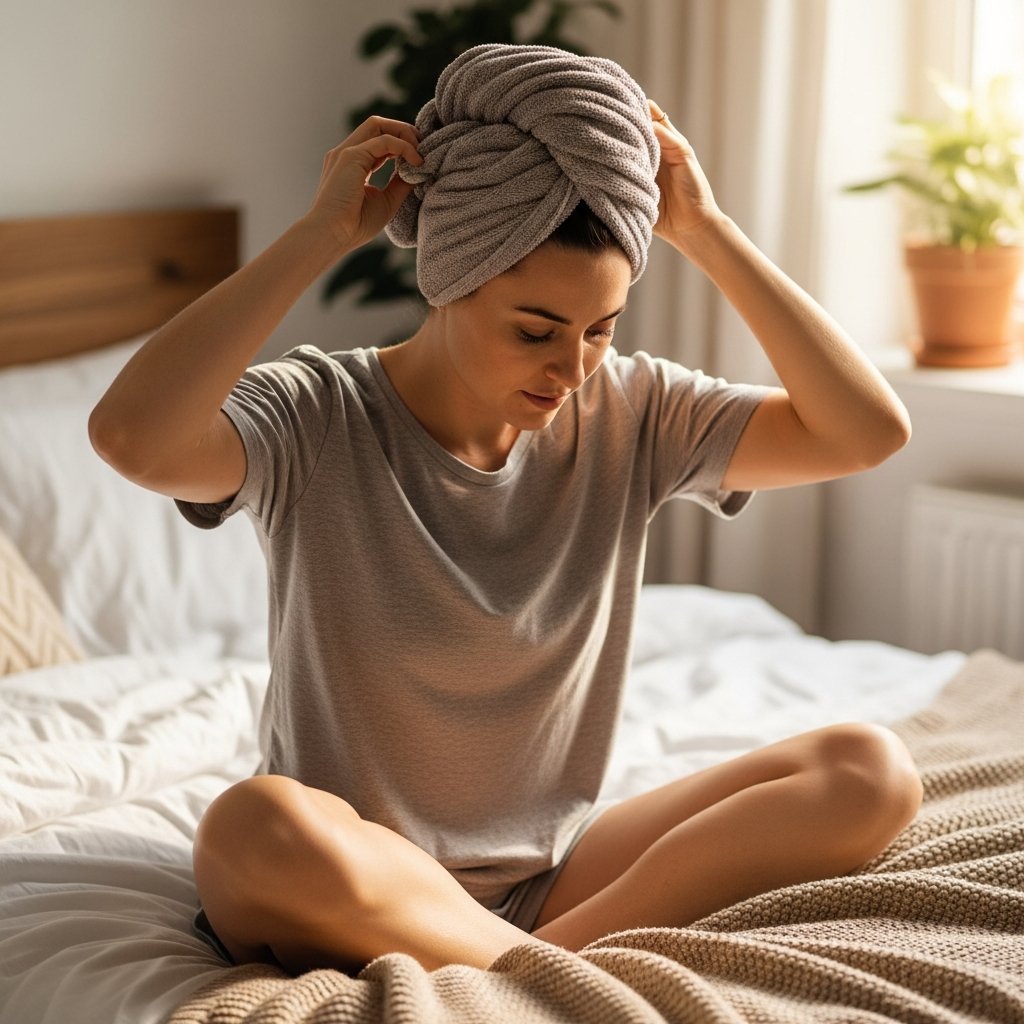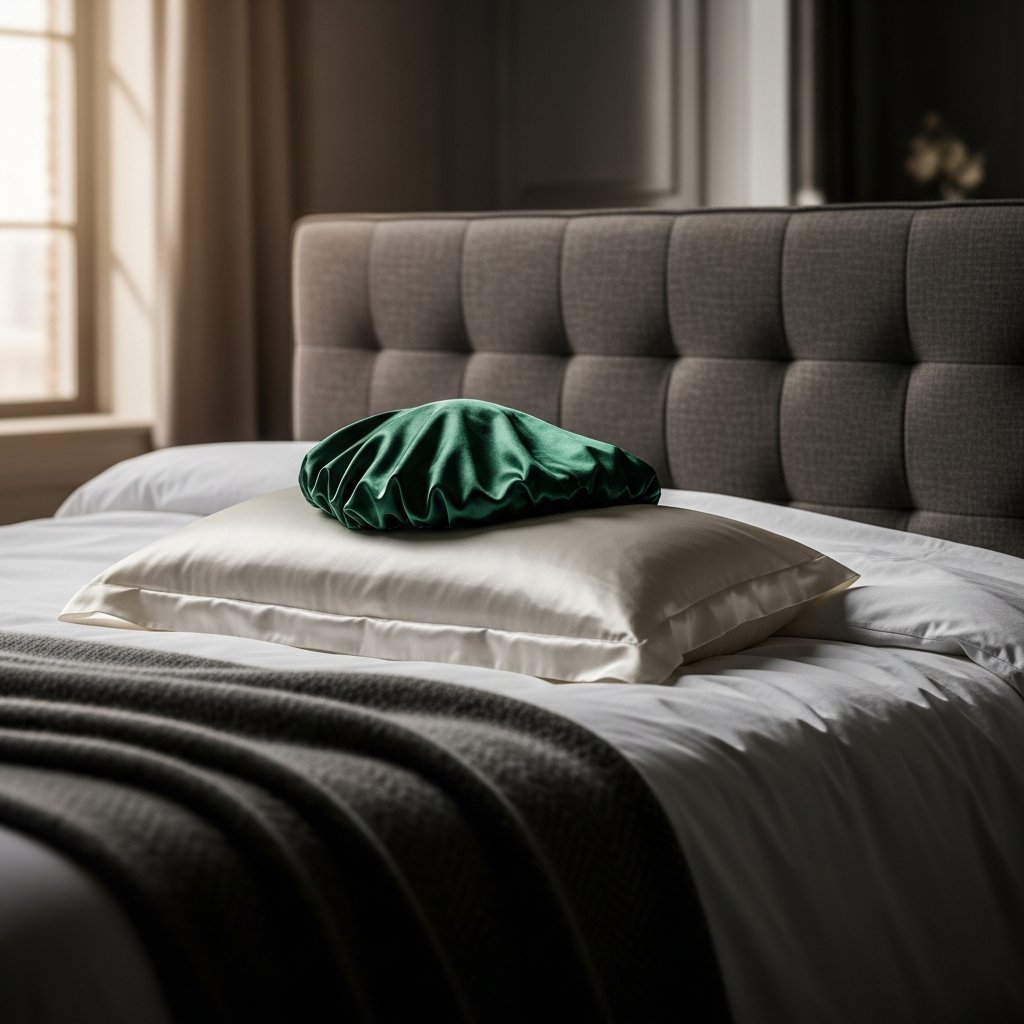
How to Grow Out Bangs Gracefully: Styling Tips for Every Stage | The Ultimate Hair Guide
11 min read

11 min read

10 min read

9 min read

14 min read

17 min read

12 min read
For decades, individuals with textured hair have fought a constant battle against their natural biology, armed with flat irons, chemical relaxers, and smoothing serums designed to hide their curls. However, a massive shift has occurred in the beauty industry. The natural hair movement has brought the "Curly Girl Method" (CGM) to the forefront, transforming how people view and care for their waves, curls, and coils. Whether you have subtle 2A waves or tight 4C coils, this method promises to restore health, reduce frizz, and define your natural pattern.
Embracing the Curly Girl Method is not merely about changing shampoo; it is a lifestyle change for your hair. It involves unlearning years of conventional hair care advice—such as the necessity of daily shampooing or the idea that frizz is an enemy that must be beaten into submission with heat. Instead, CGM teaches that frizz is often just a curl waiting for moisture and the right technique.
This comprehensive guide serves as a roadmap for beginners looking to start their journey toward healthier hair. We will break down the science behind the method, the essential steps to get started, how to identify your specific hair needs, and, crucially, the common mistakes that often cause people to quit before seeing results. By understanding the 'why' behind the 'how,' you can tailor this method to suit your unique texture.
At the heart of the Curly Girl Method is the elimination of ingredients and tools that strip hair of its natural moisture or disrupt the curl pattern. Traditional hair care products are often formulated with harsh chemicals that might work for straight hair but are detrimental to textured hair. Curly hair is naturally drier than straight hair because the natural oils produced by the scalp (sebum) struggle to travel down the spiral of the hair shaft. Therefore, moisture retention is the primary goal.

The first rule of CGM is avoiding sulfates. Sulfates, commonly listed as Sodium Lauryl Sulfate (SLS) or Sodium Laureth Sulfate (SLES), are harsh detergents found in most commercial shampoos. They are excellent at removing dirt and oil, but they are too effective for curly hair, stripping away necessary moisture and leaving the cuticle raised, dry, and frizzy. In the Curly Girl Method, sulfates are replaced with gentler cleansers or "co-washes" (conditioner washing) that clean the scalp without dehydrating the strands.
The second major prohibition is silicones. Silicones are synthetic polymers that coat the hair strand to give it artificial shine and slip. While they make hair look healthy temporarily, non-water-soluble silicones build up on the hair shaft over time. Since you aren't using harsh sulfates to wash them away, this buildup prevents moisture from penetrating the hair, eventually leading to dry, brittle straw-like texture. The method also advises against drying alcohols, waxes (unless water-soluble), and, perhaps most difficult for some, the use of high-heat styling tools like straighteners and curling irons.
Before buying a cart full of products, it is vital to understand that not all curls are created equal. While many people focus on their curl pattern (e.g., 3B or 4A), knowing your hair's porosity is significantly more important for choosing the right products. Porosity refers to your hair's ability to absorb and retain moisture. It is determined by the condition of the hair cuticle—the flexible outer layer of the hair shaft.

Low Porosity: The cuticles are tightly bound and lay flat. This hair type often looks shiny and healthy but repels water. It takes a long time to get fully wet in the shower and a long time to dry. Products tend to sit on top of the hair rather than sinking in. For low porosity hair, lightweight products and the use of heat (like a warm towel or hooded dryer) during deep conditioning are essential to open the cuticle and let moisture in.
High Porosity: The cuticles are raised or damaged, often due to heat styling, chemical processing, or genetics. This hair absorbs moisture instantly—like a sponge—but loses it just as fast. High porosity hair is prone to frizz and tangling in humid weather. This hair type benefits from protein treatments to strengthen the structure and heavier sealants (like oils and butters) to lock moisture inside.
Medium Porosity: This is the middle ground where the cuticle is loose enough to let moisture in but tight enough to keep it there. It is generally low maintenance and holds styles well. Understanding where you fall on this spectrum will dictate whether you need protein-heavy products, moisture-rich deep conditioners, or lightweight mousses.
Starting the Curly Girl Method can be overwhelming due to the sheer volume of information available. However, the routine can be boiled down to four main phases: The Final Wash, Cleanse, Condition, and Style. Simplification is key when you are just starting out.

One of the most misunderstood aspects of the Curly Girl Method is the use of gel. Many beginners fear the "crunchy" look of the 90s, but gel is essential for frizz control and definition. The key is how it is used. Styling products should be applied to soaking wet hair to trap moisture. Glaze the gel over your hair and then scrunch it up toward the scalp to encourage curl formation.

As your hair dries, the gel will harden into a stiff shell known as a "gel cast." This cast holds the curl shape in place while it dries and prevents frizz from forming. Do not touch your hair while it is drying. This is the golden rule. Touching wet curls creates frizz. You can air dry or use a diffuser on a low heat/low speed setting to speed up the process without blasting the curls apart.
Once the hair is 100% dry—and only then—you will "Scrunch Out The Crunch" (SOTC). Take a few drops of lightweight oil or just use your dry hands, and gently scrunch your hair upwards. The hard gel cast will break, leaving behind soft, defined, and frizz-free curls. This technique gives you the hold of a strong gel with the softness of natural hair.
It is crucial to discuss the "transition phase." When you stop using sulfates, your scalp may panic. For years, harsh detergents have stripped your natural oils, causing your scalp to overproduce sebum to compensate. When you switch to gentle cleansing, your scalp takes time to get the memo that it doesn't need to produce as much oil. Consequently, many people experience a period of oily roots, limp hair, or increased frizz for the first few weeks.

This period can last anywhere from two weeks to a few months. It is the primary reason people quit the method. During this time, you might need to wash your hair more frequently or utilize dry shampoo (silicone-free, of course). Patience is vital. Your hair is healing and recalibrating. It is also detoxing from years of chemical buildup and heat damage. The curls you see in week one will look vastly different from the curls you see in month six.
Even with the best intentions, beginners often fall into traps that hinder their progress. Avoiding these common mistakes can save you months of frustration and bad hair days.


Q: Can I still use heat styling tools occasionally? A: The strict method forbids heat styling as it damages the protein structure of the hair. However, many people modify the method. If you must use heat, always use a silicone-free heat protectant, but understand it will set back your progress.

Q: Is the Curly Girl Method suitable for wavy hair? A: Absolutely. Wavy hair (Type 2) benefits greatly from this method. However, wavies should be careful not to use heavy butters and oils that are better suited for tighter coils, as these can weigh waves down and straighten them out.
Q: How do I know if a product is CGM approved? A: Ingredients lists can be tricky. Look for labels that say "sulfate-free," "silicone-free," and "paraben-free." There are also several online databases and mobile apps where you can scan barcodes or paste ingredient lists to check for non-compliant ingredients.
Q: My hair feels waxy after a few weeks. What is wrong? A: This is likely product buildup or a reaction to hard water. Do a clarifying wash with a sulfate-free clarifier or an apple cider vinegar rinse to strip the buildup and restore bounce.
Q: Can I dye my hair while on the Curly Girl Method? A: Yes, but with caution. Bleaching and dyeing are chemical processes that damage hair. If you color your hair, you must be diligent about deep conditioning and protein treatments to repair the bonds. Avoid dyes containing silicones.

Embarking on the Curly Girl Method is a journey of self-discovery. It is about working with your natural attributes rather than fighting against them. While the rules and ingredient lists may seem daunting at first, the results—healthy, bouncy, shiny curls—are undeniable. Remember that every head of hair is unique; what works for an influencer on Instagram may not work for you, and that is okay. Experiment with products, track your progress, and be patient with the transition. Your natural hair is beautiful, and with the right care, it will flourish.

11 min read

10 min read

9 min read